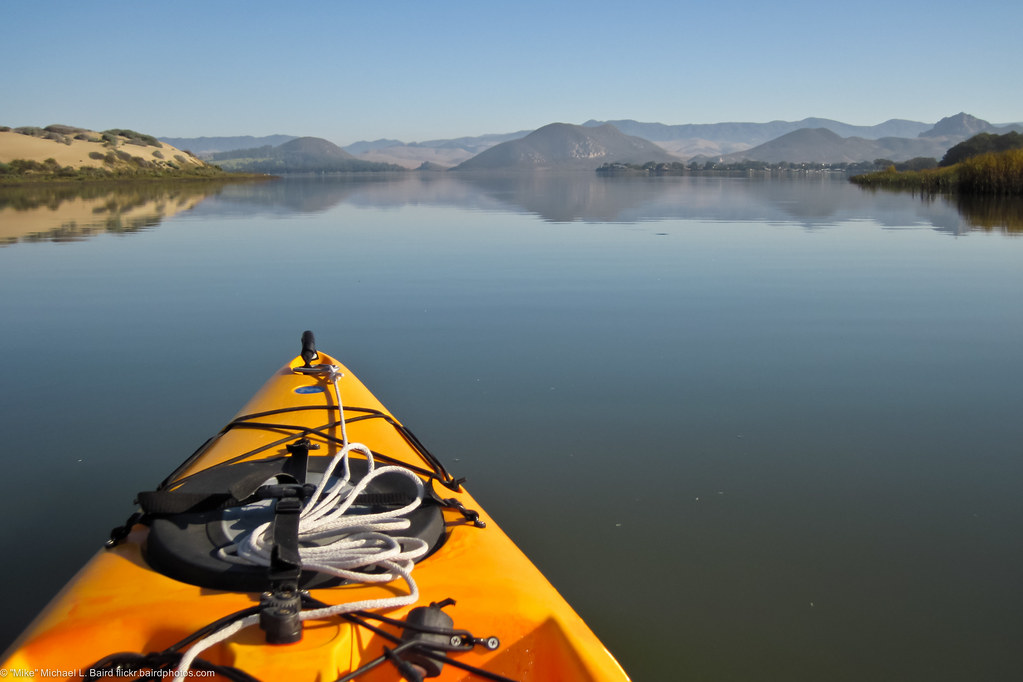1. Store Items for Accessibility. How often and how easily you need access to an item will determine where you locate it on or in your kayak, and therefore will influence how you keep it dry. Items that you need to access only in case of emergencies (like a dry change of clothes, or matches/a lighter to start a fire) can be stored in forward or aft bulkhead compartments, which is your first line of defense in keeping them dry. Items that you might want easier access to (like a camera) can be stored in some kind of dry bag or deck bag located within reach.
2. Use Multiple Layers of Protection. I bring a cell phone with me on my paddle trips for emergency communication, and also to take occasional pictures when I land on an island beach or some other temporary rest stop. Because I don't need ready access to it while paddling, I store it in my forward compartment, which is sealed by a tight fitting hatch - protection layer #1. Inside the compartment, the phone rests inside a dry bag - protection layer #2, and inside the dry bag, I keep my towel wrapped around my phone - protection layer #3. I could even go so far as to put the phone inside a water resistant case, then inside the towel, then inside the dry bag, and so on. You get the picture. Use multiple layers in case an outer layer fails.
3. Consider Inflatable Dry Bags. Once I discovered that the bulkheads in the interior of my sit-on-top touring kayak were not water tight, I opted to add inflatable dry bags to each compartment (see my post Kayak Repairs That Last). These are meant to perform double duty as dry storage bags and float bags to give my kayak additional buoyancy should it take on water (especially since the bulkheads are unreliable). These bags come with a stem that you blow air through to inflate the bag. They have the same kind of fold over, gasketed bag opening that standard dry bags have. Once you have them filled, and the opening folded closed and clipped with the attached buckles, you can use the air stem to inflate them. This adds a positive pressure to the interior of the bag that makes water less likely to penetrate. I find they hold the air pretty well, so long as the opening is folded tightly, and the stem cap is twisted on tight.
 |
| Inflatable Kayak Dry Bag |
4. Make Sure Your Hatch Covers Fit Tight. Your hatch covers are your first line of defense for items stored in compartments. They work to keep water washing over your deck from getting inside the compartment, or for keeping water out of the compartments should your kayak capsize or roll. Their function is as much for safety as it is for storage, so make sure your hatch covers fit tight. There are a variety of designs - some are held tight by straps and buckles, some snap on over a lip in the compartment opening, some have a neoprene membrane that pulls tight over the opening and under the cover, and some lock or screw inside a ring that is mounted to the deck. Carefully examine the design of your hatch covers, and make sure all their elements are functioning properly and are fitting securely. If yours fit inside an attached ring, make sure the ring is sealed and screwed tight to the deck. Apply fresh sealant once per season, or otherwise as needed.
5. Consider Upgrading to Waterproof Gear. If your goal is to capture multiple images of your in-progress paddle trip, maybe you should consider a waterproof camera, or a GoPro. Maybe a marine radio is a better choice for emergency communications. Any gear that's designed to be wet, especially items designed to be submerged, will fair better in kayaking conditions. The more precious the item, the more you need to ensure it can withstand the water.
Getting wet is part of the fun of being in or on the water, so long as you're drying off fast enough to stay safe (see my post 8 Tips for Dressing Right for Your Kayaking Adventure). Keeping some of your stuff dry, though, is imperative. Use the right gear, protect it in multiple layers, and batten down the hatches. And, if you don't think you'll need it for safety or comfort, leave it back on dry land.
- TB on the Water
